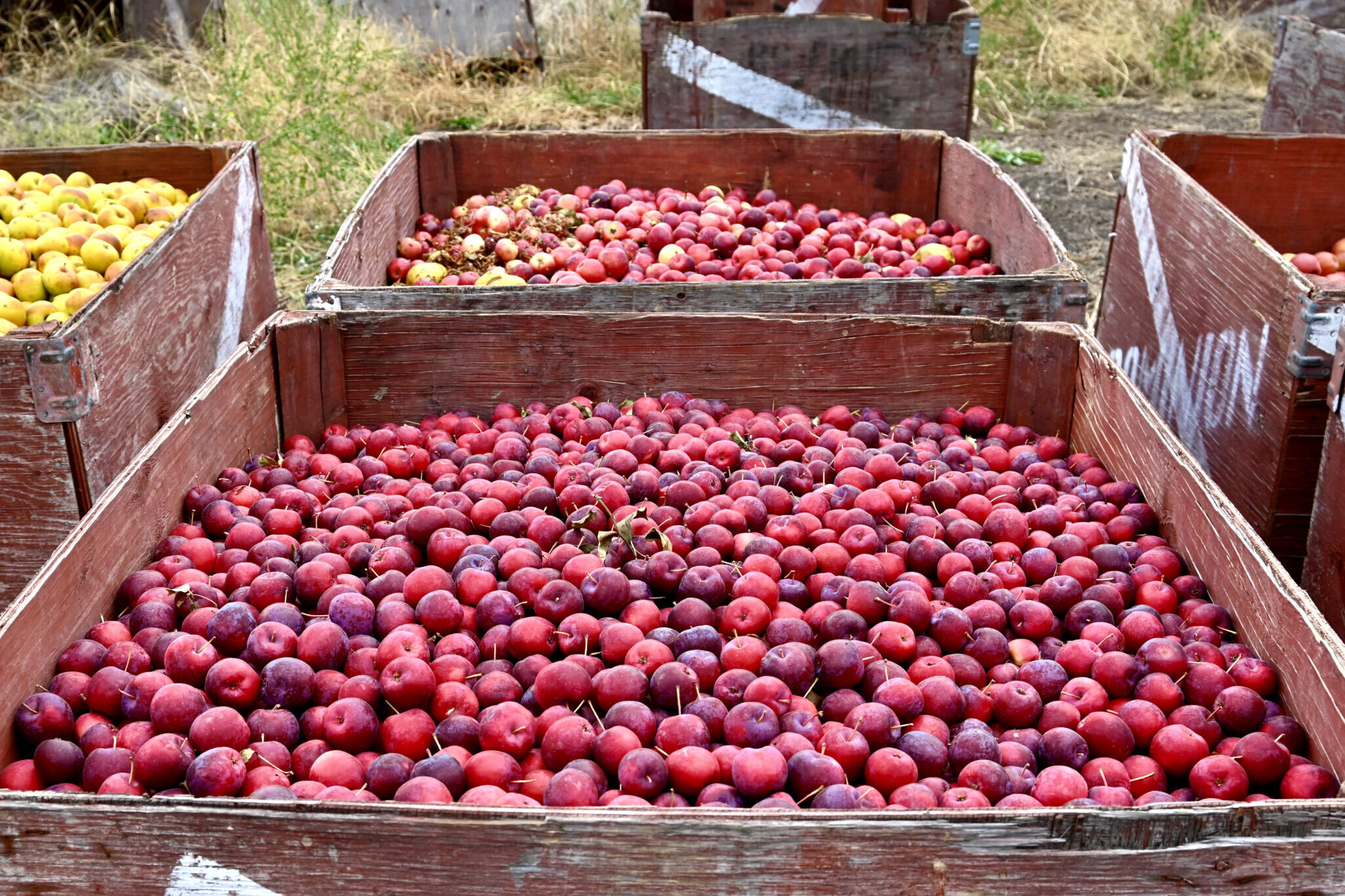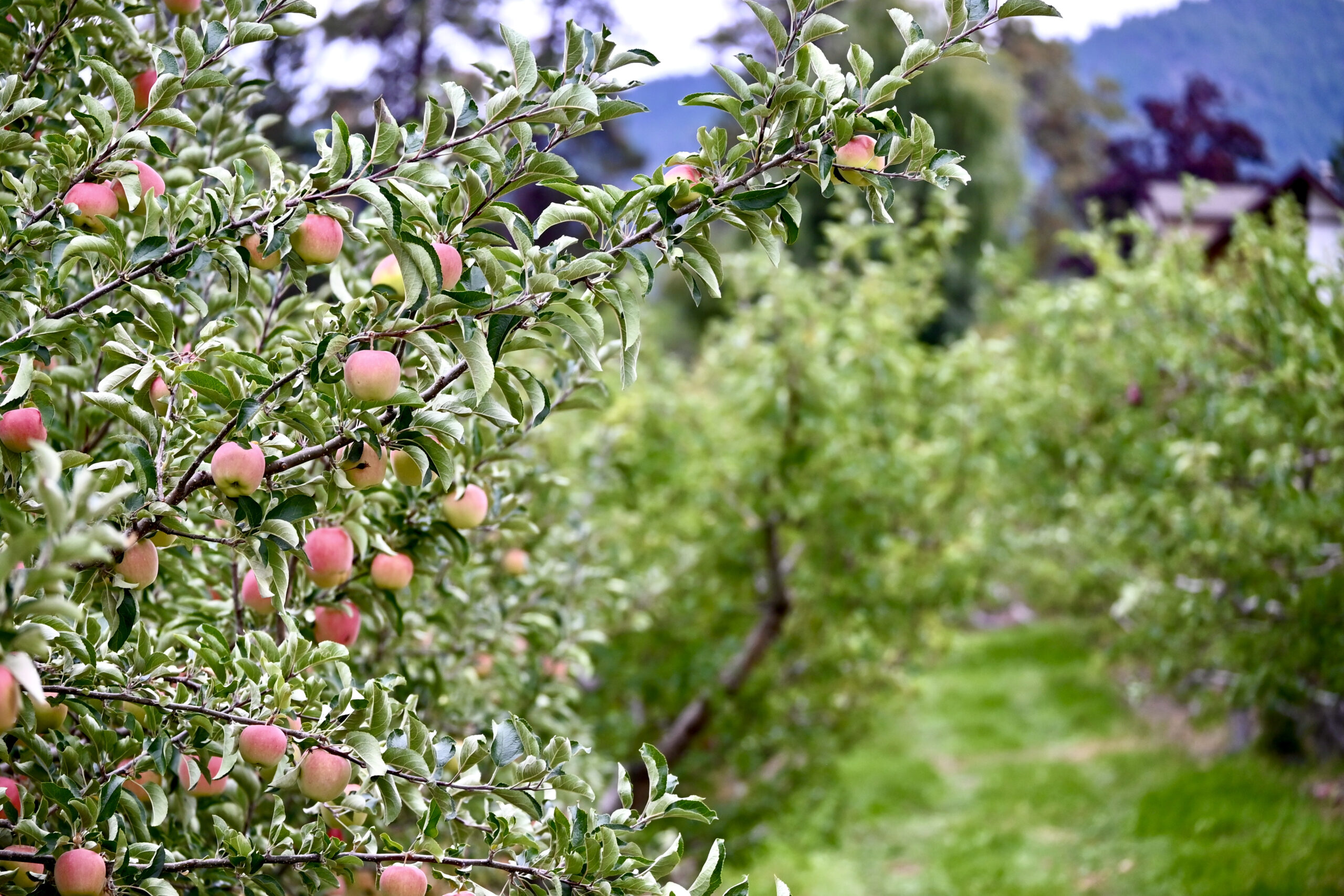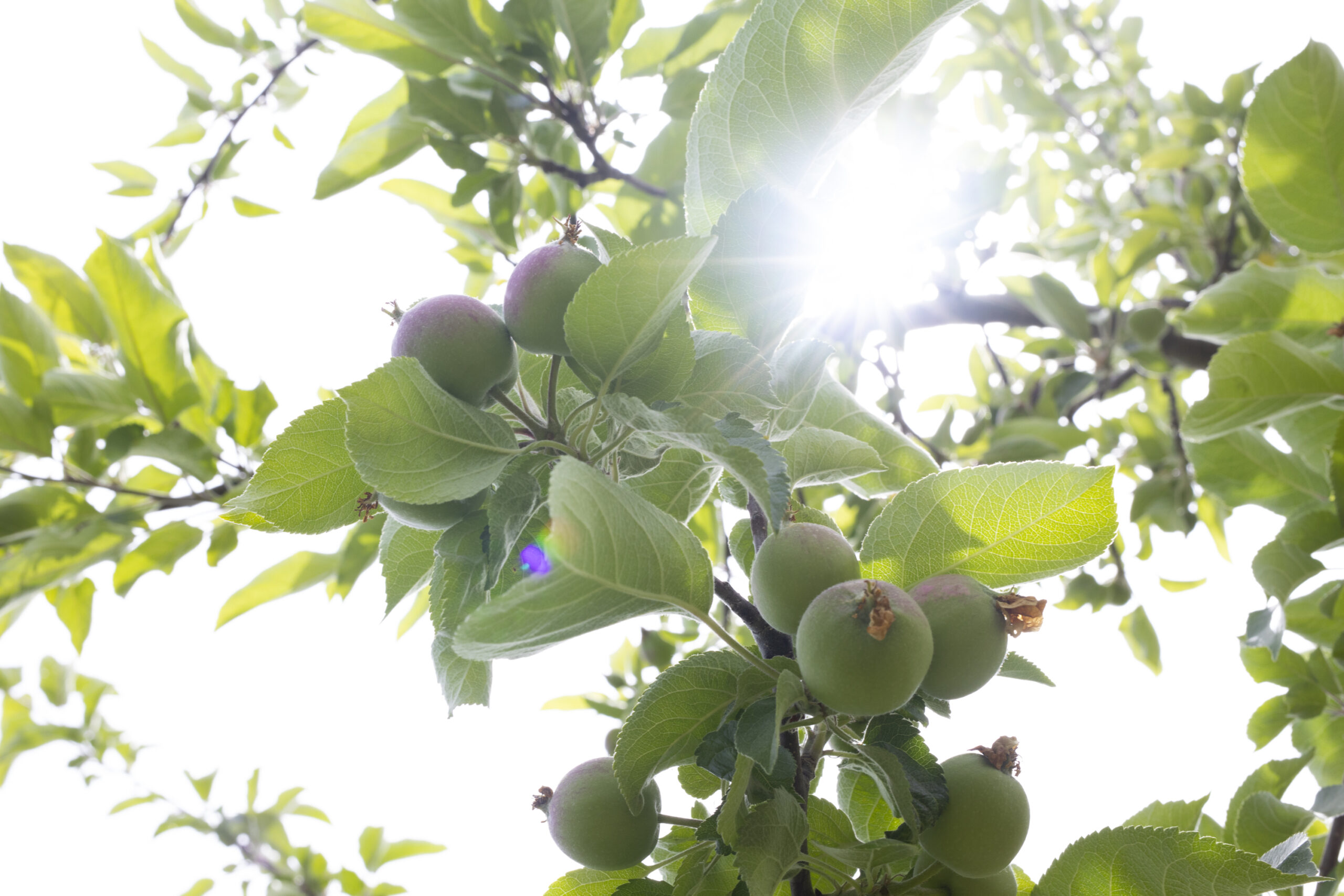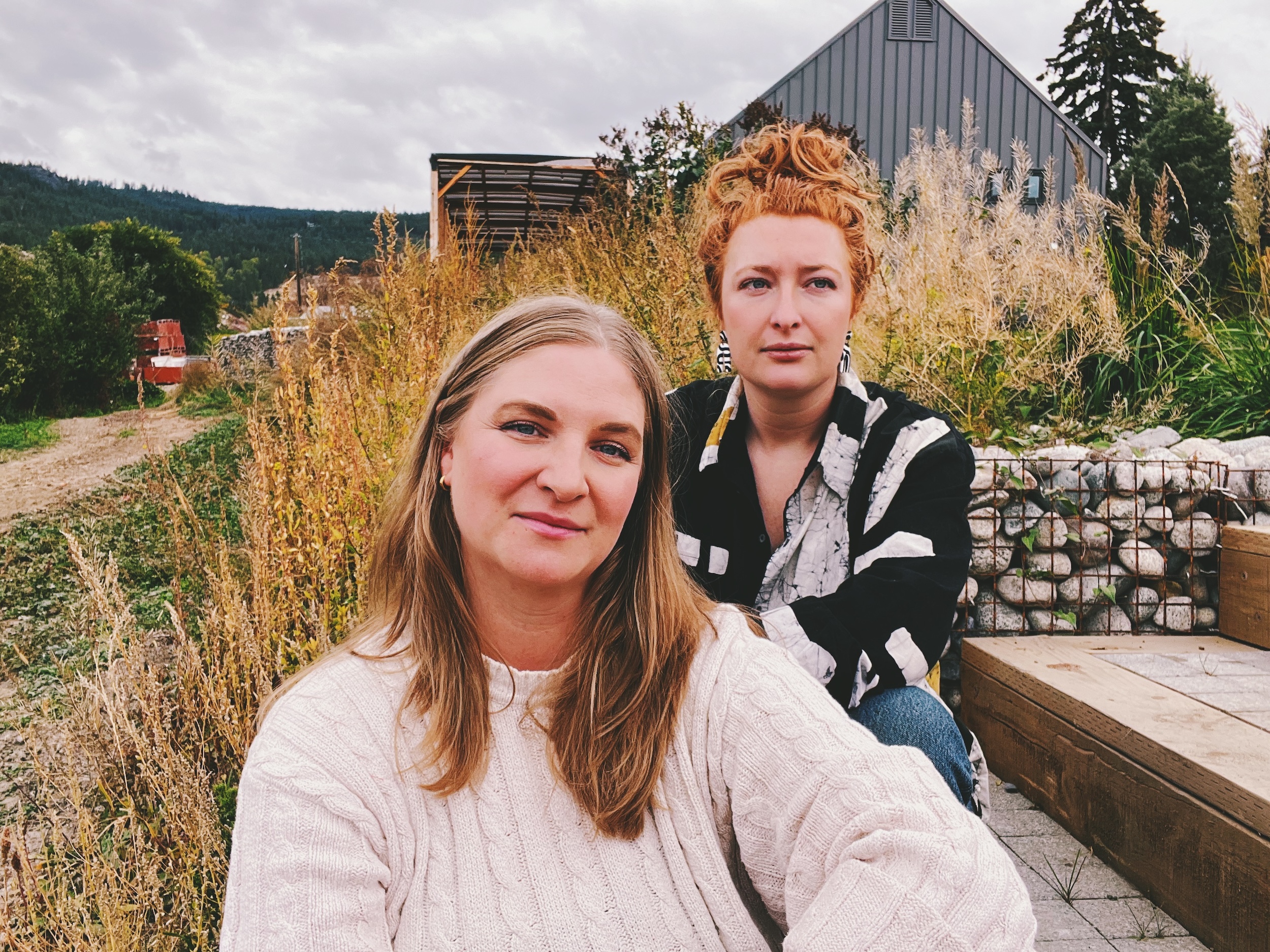
The Right Honourable Mary Simon aims to be an Arctic fox
Canada’s first-ever Indigenous governor general doesn’t play favourites among our majestic natural wonders, but she...
Get the inside scoop on The Narwhal’s environment and climate reporting by signing up for our free newsletter.
Spring in British Columbia’s Okanagan Valley is usually a time of optimism. In the province’s fertile agricultural hub, April and May mean blossoms on the valley’s fruit trees and bud break in its many vineyards, signs of the growing season ahead. This spring was different.
“At the end of the day, when it was blossom time, there were no blossoms. That’s when you realize, well, the soft fruit was dead.”
Pinder Dhaliwal, a third-generation farmer in Oliver, knew his orchards were in peril all year. In January, a cold snap dropped temperatures across the Okanagan down to nearly -30 C degrees from unseasonable highs. The extreme fluctuation damaged grape, peach, nectarine, pear, plum, cherry and apricot plants across the region. In the spring, Dhaliwal realized his 12 acres of orchards had lost all their soft fruits, save for 30 per cent of the farm’s cherries. It was only the first loss of several.
At the end of July, the BC Tree Fruits Co-operative, an 88-year-old organization that provided packing, storage, marketing and sales services for roughly half of the Okanagan’s 600 tree fruit growers, announced its closure. It was just a week before Dhaliwal was set to harvest his summer apples and the news left him and many other farmers scrambling.
“It’s kind of a specialty apple,” Dhaliwal says of the sunrise variety that dominates his orchard. The co-op had given him an estimate of how much of his fruit it would take. “The co-op had all its clients and buyers lined up for that apple, so [the closure] made it very difficult for me.” Half of Dhaliwal’s crop was left hanging on the trees. He couldn’t find enough private buyers to take it, nor labourers willing to wait between workdays as he secured clients.

Dhaliwal’s story is only one among many similar experiences B.C. tree fruit growers have faced in recent years. Apple growers have been especially hard hit. Pummelled by increasingly frequent extreme weather events, rock-bottom prices, a fractured local economy, increased competition with international markets — and minimal government support — the province’s apple farmers have been left to fend for themselves.
Tree fruits have been a part of the Okanagan since settlers first planted orchards in the area in the late 1890s. Eighty per cent of B.C.’s tree fruits are grown in the North, Central and South Okanagan as well as in the Similkameen and Creston Valleys. The region’s varied climates, warm, hot summers and historically mild winters have allowed orchards to prosper. In 2019, the tree fruit sector’s contribution to the province’s gross domestic product (GDP) was $162 million.
Apples are an integral part of the industry. The valley grows over 12 different varieties, and apple orchards account for 50 per cent of the over 12,000 acres of fruit trees in the area. In the fall, roadside stands and markets are lined with gala, ambrosia and honeycrisp, enticing in all their red, green and yellow glory.
Yet as costs have increased alongside a competitive international market and retail consolidation, the industry’s mostly small-scale growers have struggled to stay afloat.
According to research out of the University of British Columbia, in 2022 B.C. imported nearly 80 per cent of its apples from other countries, a 30 per cent increase from 2018. Almost 60 per cent of imports came from Washington state, where producers have similarly favourable growing conditions, but also cheaper land costs, larger-scale operations and government subsidies. Chain grocery retailers have long favoured apples from across the border, say B.C. farmers.
Over the last few years, growers have also faced damage caused by the 2021 heat dome, rising summer temperatures that have impacted labour conditions and two winters of cold freezes. The dissolution of the BC Tree Fruits Co-op was only the last chip to fall in a game that already seemed determined.
The BC Tree Fruits Co-operative was formed in 1936, as a way for farmers to consolidate operations and power. The co-op provided growers with bins, packing services, cold storage facilities and marketing and sales. Farmers who worked with the co-op would arrange contracts early in the season, promising a certain portion or the entirety of their crop. For many, it was a way to ensure transparency.
But over the last decade, private packing houses have emerged as competition, with offers of marginally higher returns tempting some away from the co-op as it buckled under various pressures.
“We were members, but about 20 years ago I left. I just got kind of frustrated with the management,” says Peter Simonsen, a Naramata-based apple, peach, pear and nectarine farmer and president of the BC Fruit Growers Association, an independent members’ organization.
Simonsen and other growers The Narwhal spoke with describe the co-op’s issues as multifold: the difficult economic realities of the industry, as well as climate challenges producing lower yields. But the co-op was also suffering from mismanagement and infighting between the board and members. One former grower says there had been complaints around lack of versatility and innovation for nearly 15 years before its dissolution.
Simonsen has sent his fruit to private packing houses or sold to private clients for the last two decades. It’s not always a safe bet.

“We deliver our fruit into this system and it is unaccountable. I don’t know what they’re selling it for, and I don’t know what they’re charging me,” he says of the private packers.
The system operates on an annual payout, with growers receiving their cut after the packer has sold the apples.
“Six months later they’ll say ‘I sold all your fruit, prices weren’t very good, and here’s all your money,’ says Simonsen. “And you’ll go, like, ‘Why isn’t it more?’” The most trustworthy packers, he adds, have full rosters and aren’t accepting new farmers.
The Narwhal reached out to two of the Okanagan’s largest packing houses but didn’t receive a response from either. In 2021, the Tyee reported some growers paying 30 to 35 cents a pound to produce their apples, while packers were offering as low as 12 cents a pound in return.
The co-op announced its closure in an email to members on July 26, citing “extremely low estimated fruit volumes” after the winter freeze and “difficult market conditions.” It was over $50 million in debt. The business filed for creditor protection two weeks later, and all its assets, including several processing plants and cold storage facilities, are currently up for sale. While former members have called on the BC government for assistance, the NDP said it was unable to intervene on behalf of a private business that had moved into the court system.
The co-op’s dissolution has left many apple farmers desperate. Dhaliwal believes nearly all growers have been able to secure clients this fall, but the closure has raised serious questions about the future.
“We’re fourth and fifth generational orchardists here,” Simonsen says. “This industry, it’s a beautiful thing. It really is a beautiful thing. We grow fruit in the best place in North America to grow fruit, and it’s just so tragic.”

Government neglect has fanned the flames of an already-precarious situation.
“I’m just so disillusioned with how we’ve been treated by the NDP government. We just haven’t been listened to,” Simonsen says. “We have gone to them to say ‘Look, all the other provinces in Canada support their agriculture: the US is getting direct subsidies and competing with us.’ And they have just ignored us. It seems so strange that something as important as agriculture would be considered so flippantly.”
Simonsen is not alone in his disillusionment. Many growers blame the current government for the situation tree fruit farmers are in. British Columbia has more fruit farms than any other province in Canada and the agriculture sector contributed $2.25 billion to the province’s GDP in 2022. But according to the BC Agriculture Council, the province only reinvests 2.5 per cent of that contribution back into the sector. It’s the lowest reinvestment figure in the country, where the national average has historically been closer to 12 per cent. This low investment has meant the sector has missed out on opportunities for federal dollar-matching.
Simonsen says the government is also neglecting the increasing, unpredictable effect of climate change. After the 2021 heat dome cooked and sunburned many of the province’s cherries and apples, the government paid out $17 million in heat claims to businesses: $11.9 million went to tree fruit growers –– or about 0.8 per cent of the province’s agricultural GDP contribution. In Saskatchewan, which had a provincial agricultural GDP of $6.8 billion in 2022, the government paid out roughly $2.4 billion for crop insurance claims, about 35 per cent.
In Washington, the federal government sent growers emergency funding after the same January cold snap, , and has offered farms low-interest loans to recover from an equally challenging 2023 season. Washington’s apple growers also received direct federal payments during the pandemic.
B.C. does have a crop insurance program called AgriStability that growers can access if their annual yields fall below 30 per cent of their historical records. In August, Premier David Eby announced the province would invest $15 million into the program for 2024 and increase compensation rates for crop losses from 80 to 90 per cent. This announcement came on top of $5 million for a Tree Fruit Climate Resiliency Program that will help farmers purchase equipment to deal with future climate events. In March, the province also announced $70 million to help grape, berry and tree fruit producers replace dead or diseased plants with more climate-resilient varieties.
But growers say it simply isn’t enough. Crop insurance assessments often only factor in quantity of a harvest, says Simonsen, but quality has also been a problem when weather events result in smaller or damaged fruits. And replanted trees take several years to reach full productivity. More immediate solutions are needed.
The Ministry of Agriculture told The Narwhal it was unavailable for comment as a result of the upcoming B.C. election.
Everyone agrees: the situation, and solutions, are complex. But, says Simonsen, one issue is an undeniable contributor: “When you have an open border and five buyers, you don’t have to be very business-savvy to figure that one out.”
The five buyers he’s talking about are Canada’s biggest grocery retailers. Nationally, there are Loblaw (which owns No Frills and Your Independent Grocer), Sobeys (which owns Safeway and Ontario’s Longo Brothers), Costco and Walmart. In B.C., Pattison Foods is the fifth main buyer, while Metro joins the pack in Ontario and Quebec. These retailers command nearly 80 per cent of the market share, making it difficult to negotiate.
“Often we sell for less than the Americans because we just basically rely on what the retailers say, like that they can get fruit from Washington for $25 a box,” Simonsen says.
The solution he and other growers are banking on is a marketing commission. It would allow growers greater control over three key elements, including regulating the quality of the product. Another is the ability to data-share between farms and with the Canada Border Services Agency to learn the price of apple imports. The last is promotional services, which would also bring opportunities for provincial and federal dollar-matching.
Commissions allow individual agricultural producers to consolidate, with the aim of providing fair, stable incomes for farmers and high-quality products for consumers. Dairy and poultry are managed under similar federal commissions, which allow eligible industries to intervene in national policy related to their product. Under B.C.’s Natural Products Marketing Act, certain agricultural commodities are already eligible and vegetables and cranberries are regulated under provincial commissions.
“It also shames the retailer into buying our fruit,” Simonsen says “Right now they have no real reason to buy our fruit, [and] they say it’s because people just care about cost. We can advertise our apples and educate people about our apples and why they’re the best. We’re organic growers [ourselves], but most of the apples in the valley are pesticide and residue-free.”
Washington has an apple commission, and several other key growing regions across the United States and Canada have them in place for agricultural products. The B.C. apple commission would throw a wrench into the current system of private packing houses, and Simonsen says some private packers are already pushing back, but he and other farmers see it as one potential route forward.

For the time being, BC’s apple farmers are making do. Nearing retirement, Simonsen maintains hope that his children and grandchildren will be able to continue his family’s multi-generational farming legacy. Since 2018, his daughter Annelise Simonsen and daughter-in-law Kaleigh Jorgensen have used a small portion of the orchard’s annual crop for their on-site cidery, Creek & Gully.
“We started the cidery so we could use our own apples. We kind of had a ‘can’t beat ‘em, join ‘em’ approach,” Jorgensen says. It allows the next generation to have something of their own, she explains, while making use of lower-quality fruit and diversifying revenue streams.
More recently, the family has started offering non-alcoholic cider, dried fruit and wedding bookings.“You have to get creative and evolve or you just can’t farm anymore,” Jorgensen says.
She’s saddened by the crisis the industry is in. “You see people chopping down their orchards. All these trees. It’s depressing and scary. This is food. We’re not an airline, we’re not an oil and gas company.”
In Oliver, Dhaliwal is preparing to rip out his sunrise apple orchard. He doesn’t foresee any future for the crop without the controlled-atmosphere storage the BC Tree Fruits Co-operative offered, which significantly extended the apples’ three-week shelf life.
“I just see that a lot of other packers don’t want to take [the apple],” he says. “They want to streamline everything, make it efficient, make it cost-effective. It’s a summer apple, so they don’t want to run around every three weeks and make sure everybody gets it. They don’t care if the consumer wants it. They’ll say, ‘OK, we’ve got winter apples.’ There’s less stress there.”
Dhaliwal’s other fruit trees are also suffering because of the damage from the heat and cold events of recent seasons — many are dying, while others are no longer strong enough to fight off insects. Like B.C.’s apple industry, they’ve fallen victim to a domino effect: “When something gets weak, other things start collapsing.”
Get the inside scoop on The Narwhal’s environment and climate reporting by signing up for our free newsletter. A $335 million funding commitment to fund...
Continue reading
Canada’s first-ever Indigenous governor general doesn’t play favourites among our majestic natural wonders, but she...

In Alberta, a massive open-pit coal mine near Jasper National Park is hoping to expand...

A trade war could help remake B.C.’s food system, but will family farmers be left...
